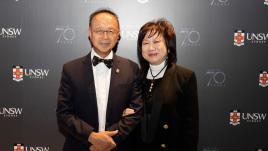Rapid manufacturing technologies to solve the nation’s shortfall of critical healthcare supplies
UNSW academics are working closely with industrial partners and the health sector to advance manufacturing of PPE and medical equipment.
The outbreak of COVID-19 has led to a severe shortage of personal protective equipment (PPE) for healthcare workers, and critical medical devices to treat patients in intensive care units. Manufacturers are facing increasing pressure to produce higher quantities of medical and hygiene products, but a lack of advanced manufacturing technologies for rapid production is thwarting global efforts.
UNSW’s Rapid Response Research Initiative is supporting a cross-disciplinary team of academics spanning engineering, science, medicine, and design to develop new rapid manufacturing technologies and processes to meet growing demand. When applied, these solutions can be scaled-up by local industries to rapidly manufacture PPE and critical components for medical devices.
The team — Dr Xiaopeng Li, Professor Chun Wang, Professor Jay Kruzic, Professor Naresh Kumar, Professor Ilpo Koshinen, Professor Wei Wang, Dr Jin Zhang and Dr Blake Cochran — have found an innovative way to address this healthcare shortage while also boosting local industry through innovative rapid fabrication methods that will potentially save jobs, and lives.
This project will establish an on-demand, rapid manufacturing network at UNSW and local companies that will integrate 3D printing capacities with knowledge and data-driven predictive modeling.
Dr Li explains, “we will connect 10 desktop polymer 3D printers, which will be centrally controlled using data-driven predictive modelling. This will judiciously allocate printing jobs to each printer based on printer status, the printing process for each part of equipment, and the knowledge of their physical locations.”
With more than eight years’ experience in 3D printing, Dr Li says, “while 3D printing alone will never overtake the manufacturing process, what it can do is add value to the techniques and speed up the process.
“For example, creating PPE such as a plastic face shield frame would usually require the design and build of a mould, but when you incorporate 3D printing, it reduces manufacturing turnaround as moulds are no longer required” he says.
We invite you to help address the nations shortfall of PPE and critical medical device components by supporting this project.








